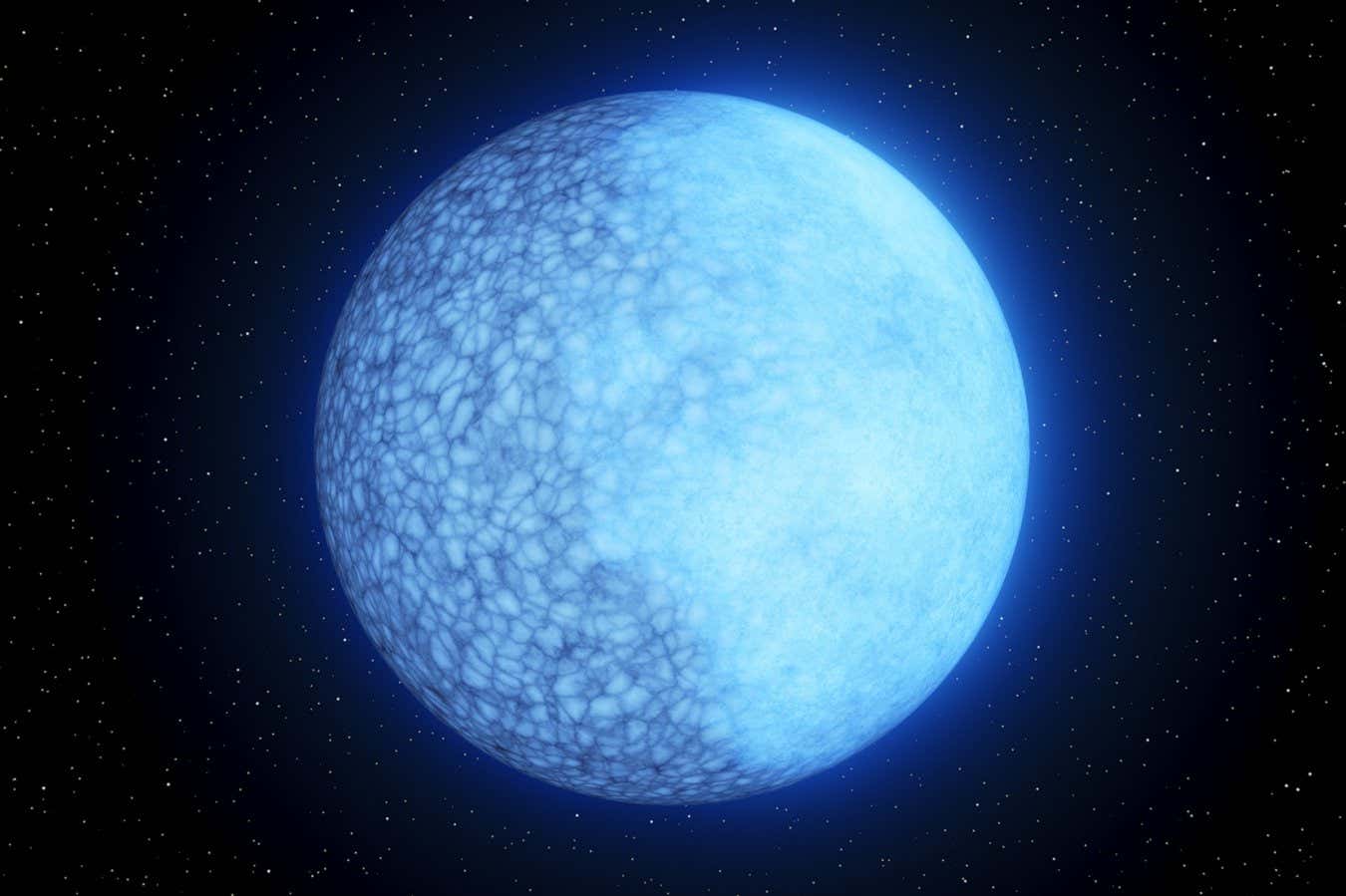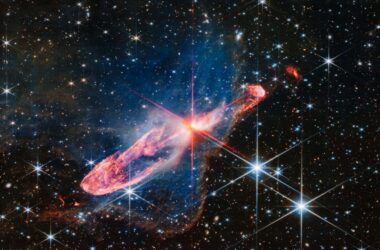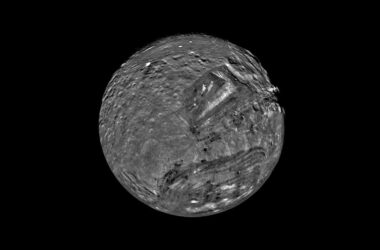Artist’s impression of Janus, the two-faced star
K. Miller, Caltech/IPAC
Astronomers have discovered a unique star with two distinct sides, each composed of a different element. Nicknamed Janus, after the Roman god of doorways and transitions, this white dwarf star is the first of its kind ever observed.
Jeremy Heyl at the University of British Columbia and his team spotted Janus using the Zwicky Transient Facility in California, and then conducted further observations using multiple telescopes. The observations revealed that one side of the star is entirely made up of hydrogen, while the other side consists solely of helium. Janus is located over 1300 light years away from Earth and rotates approximately once every 15 minutes.
While it is known that the entire surface of some white dwarfs can transition between helium and hydrogen, catching one in the midst of this change has never been definitively achieved. The mechanism behind this phenomenon remains unclear.
Heyl states, “It seems likely to be connected with a magnetic field in the star that’s a bit stronger on one side than the other, but the data itself doesn’t show evidence for a very strong magnetic field. So we still don’t completely understand what’s going on.”
If there is indeed a magnetic field, it would inhibit convection, or internal churning, on the side where it is stronger. Since white dwarfs predominantly consist of hydrogen and helium, the lighter hydrogen would naturally rise to the surface of the side with suppressed convection, while the more abundant helium would bubble up to the top on the other side.
Heyl further explains, “If it was at the distance of the moon, you’d be able to clearly see these blotches from convection and it would look like one half is around 15 per cent brighter than the other. Its temperature is about five times the temperature of the sun, so it would appear incredibly dazzling to the eye – it would be uncomfortable to look at.”
The rarity of finding only one of these stars in our search of the cosmos suggests that such objects are relatively uncommon. Identifying Janus required an extraordinary coincidence – the axis of rotation happens to be perpendicular to the division between the helium and hydrogen sides, and we happen to be positioned face-on to the star.
Having had this stroke of luck, the researchers now intend to gather more detailed data on Janus to unravel its internal dynamics. This star could hold the key to understanding this peculiar phase of white dwarf evolution.
Topics:








